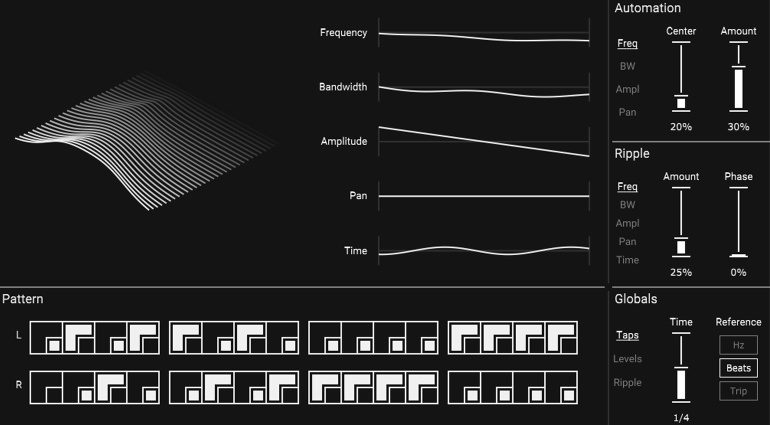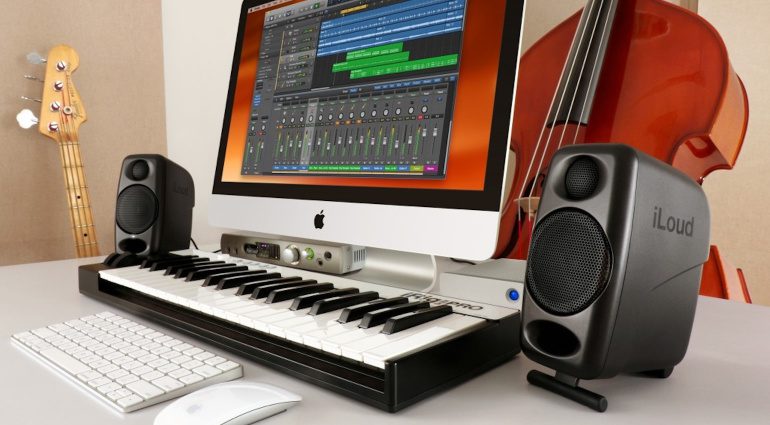Sony announced its new flagship quite recently. In this article, we’ll compare it against one of its main competitors. In other words, we’re comparing the Samsung Galaxy S24 Ultra vs Sony Xperia 1 VI. Needless to say, both of these smartphones are not only powerful but also quite large. They’re the very best these two companies have to offer, though they are quite different when you compare them.
The differences are not only limited to their designs and internals, not at all. In this article, we’ll try to help you make your purchasing decision between these two phones. We’ll first list their specifications, and will then move to a number of other categories. We’ll compare their designs, displays, performance, battery life, camera performance, and audio output.
Specs
Samsung Galaxy S24 Ultra vs Sony Xperia 1 VI, respectively
– Screen size:
6.9-inch Dynamic AMOLED 2X (flat, adaptive 120Hz, HDR10+, 2,600 nits max brightness)
6.5-inch LTPO OLED display (flat, adaptive 120Hz, HDR)
– Display resolution:
3120 x 1440
2340 x 1080
– SoC:
Qualcomm Snapdragon 8 Gen 3 for Galaxy
Qualcomm Snapdragon 8 Gen 3
– RAM:
12GB (LPDDR5X)
– Storage:
256GB/512GB/1TB (UFS 4.0)
256GB/512GB (UFS 4.0)
– Rear cameras:
200MP (wide, f/1.7 aperture, OIS, multi-directional PDAF, 0.6um pixel size), 12MP (ultrawide, 120-degree FoV, f/2.2 aperture, Dual Pixel PDAF 1.4um pixel size), 10MP (telephoto, f/2.4 aperture, OIS, Dual Pixel PDAF, 1.12um pixel size, 3x optical zoom), 50MP (periscope telephoto, OIS, PDAF, 5x optical zoom)
48MP (wide, f/1.9 aperture, 24mm lens, 1.12um pixel size, dual pixel PDAF, OIS), 12MP (ultrawide, f/2.2 aperture, 123-degree FoV, 1.4um pixel size, dual pixel PDAF), 12MP (telephoto, f/3.5 aperture, 170mm lens, 1.0um pixel size, dual pixel PDAF, 3.5x-7.1x continuous optical zoom, OIS, 4cm macro)
– Front cameras:
12MP (wide, f/2.2 aperture, Dual Pixel PDAF, 22mm lens)
12MP (wide, f/2.0 aperture, 1.22um pixel size, 24mm lens)
– Battery:
5,000mAh
– Charging:
45W wired, 15W wireless, 4.5W reverse wireless (charger not included)
30W wired, 15W wireless, 5W reverse wireless (charger & cable not included)
– Dimensions:
162.3 x 79 x 8.6mm
162 x 74 x 8.2mm
– Weight:
232/233 grams
192 grams
– Connectivity:
5G, LTE, NFC, Wi-Fi, USB Type-C, Bluetooth 5.3/5.4
– Security:
In-display fingerprint scanner (ultrasonic) & facial scanning
Side-facing fingerprint scanner
– OS:
Android 14 with One UI 6.1
Android 14
– Price:
$1,299+
€1,399+
– Buy:
Samsung Galaxy S24 Ultra (Best Buy)
Sony Xperia 1 VI (Amazon)
Samsung Galaxy S24 Ultra vs Sony Xperia 1 VI: Design
The moment you lay your eyes on these two phones you’ll notice the differences. The Galaxy S24 Ultra has sharp corners, combined with a metal frame, a flat display, and a glass backplate. The Sony Xperia 1 VI corners are rounder, while that phone also uses aluminum, glass, and has a flat display. The Galaxy S24 Ultra has a centered display camera hole and very thin bezels. The Xperia 1 VI opted for thicker top and bottom bezels in order to avoid making a hole in the display.
The sides on Sony’s flagship are mostly flat, which is not the case with the Galaxy S24 Ultra. When we flip them around, you’ll spot different camera setups. Each of the Galaxy S24 Ultra’s cameras protrude from the backplate directly. There are five cutouts and four cameras. The Xperia 1 VI has three cameras on the back. They’re all a part of the same camera island, and located in the top-left corner. Other than the standard buttons, the Xperia 1 VI also includes a shutter key on the right. The Galaxy S24 Ultra has an S Pen dock at the bottom.
The Xperia 1 VI has a wider display than its predecessor, which had a 21:9 display aspect ratio. The current-gen model is on the same playing field as the Galaxy S24 Ultra, it has a 19.5:9 display aspect ratio. That makes the two phones a lot more similar in terms of size, but still not too similar, as the Xperia 1 VI does have a smaller display. They’re almost the same height, as the Xperia 1 VI has those top and bottom bezels. The Xperia 1 VI is considerably narrower due to a smaller display, and it’s also a bit thinner.
Samsung’s flagship is also a lot heavier than the Xperia 1 VI. It weighs 232 grams compared to 192 grams of Sony’s flagship. Both smartphones offer an IP68 certification for water and dust resistance. The Galaxy S24 Ultra has a higher screen-to-body ratio, due to thinner bezels, but the difference is not as big as you may think.
The two phones have completely different in-hand feel. Both are slippery, but the Xperia 1 VI a bit less so due to flat sides, and the fact it’s narrower in the hand. Both devices do feel like premium pieces of tech, though.
Samsung Galaxy S24 Ultra vs Sony Xperia 1 VI: Display
Samsung’s flagship comes with a 6.8-inch QHD+ (3120 x 1440) Dynamic LTPO AMOLED 2X display. That panel is flat, and it has an adaptive refresh rate (1-120Hz). That display also supports HDR10+ content, and its brightness goes up to 2,600 nits. The display aspect ratio is 19.5:9, while the PPI is 505. This panel is protected by the Gorilla Armor protection from Corning.

The Sony Xperia 1 Vi, on the other hand, has a 6.5-inch fullHD+ (2340 x 1080) LTPO OLED panel. That display also has an adaptive refresh rate from 1-120Hz. HDR content is supported, while the display aspect ratio is 19.5:9. The PPI here is 396, while this panel is covered by the Gorilla Glass Victus 2. The brightness is not far off from what the Galaxy S24 Ultra offers, it’s slightly lower. The Gorilla Glass Victus 2 covers the Xperia 1 VI’s panel.
All in all, both of these smartphones offer great displays. Both displays are flat, sharp, vivid, and have great viewing angles. On the Xperia 1 VI, you do get the advantage of not having a display camera hole. On the flip side, the Galaxy S24 Ultra’s display comes with better protection which tackles reflections/glare much better, so you’ll have a better experience with it outdoors. Samsung’s panel is sharper, which is not something many of you will notice, but it’s worth noting. The bottom line is, you can’t go wrong with either, even though each of them has its advantages, as mentioned.
Samsung Galaxy S24 Ultra vs Sony Xperia 1 VI: Performance
The Snapdragon 8 Gen 3 for Galaxy SoC fuels the Galaxy S24 Ultra. The Xperia 1 VI, on the other hand, is fueled by the regular Snapdragon 8 Gen 3. The only difference is a slightly higher clock speed on the ‘for Galaxy’ model. Samsung’s flagship also includes 12GB of LPDDR5X RAM and UFS 4.0 flash storage. The Xperia 1 VI also includes 12GB of LPDDR5X RAM and UFS 4.0 flash storage.
Do they both take proper advantage of such internals? Is the performance good? Well, yes, actually, it’s great on both phones. They do come with considerably different Android UIs, but both deliver in the performance department. Everything from opening apps and jumping between them, to consuming multimedia and photo and image editing runs smoothly on these two smartphones.
The same can be said for gaming too, actually, though… there are some caveats. Both can play even the most graphically demanding games out there, but the Xperia 1 VI SoC and GPU both start throttling after a short period of time. That keeps the phone less warm than the Galaxy S24 Ultra. You’ll see the difference only in the most demanding games. Sony possibly did this to keep the phone from getting too hot. Sony’s handset does offer some more options in regards to gaming, though, which you’ll probably like. Related to screen responsiveness, for example.
Samsung Galaxy S24 Ultra vs Sony Xperia 1 VI: Battery
Samsung’s flagship includes a 5,000mAh battery on the inside. The same actually goes for the Sony Xperia 1 VI. Looking at the battery capacities alone, and the display size and resolution, the Xperia 1 VI should offer better battery life, is that the case? Well, no, not really. Don’t get me wrong, both smartphones do offer great battery life, to be quite honest, but the Galaxy S24 Ultra did prove to be better in that regard… at least in our case.
Getting 7-8 hours of screen-on-time is not a problem on the Galaxy S24 Ultra. You can even get more if you’re being careful. The Xperia 1 VI seems to be closer to 7 hours of screen-on-time, which is also great. Do note that your results may vary… wildly. Battery life will be different for each of you, as you’ll be using the phone with different apps, in different ways, with different signal strengths, and so on. If you’re playing games, taking a lot of pictures, and using the phone outdoors on 5G a lot… the battery life will suffer, naturally.
When it comes to charging, the Galaxy S24 Ultra supports 45W wired, 15W wireless, and 4.5W reverse wireless charging. The Sony Xperia 1 VI supports 30W wired, 15W wireless, and 5W reverse wireless charging. Do note that neither of the two phones comes with a charger in the box. In fact, the Xperia 1 VI doesn’t even include a charging cable in its retail box. Neither phone charges particularly fast, at least compared to the competition, but most people will be happy with their charging speeds.
Samsung Galaxy S24 Ultra vs Sony Xperia 1 VI: Cameras
The Samsung Galaxy S24 Ultra has four cameras on the back. The Sony Xperia 1 VI, on the flip side, has three. Samsung’s flagship has a 200-megapixel main camera, a 12-megapixel ultrawide unit (120-degree FoV), a 10-megapixel telephoto camera (3x optical zoom), and a 50-megapixel periscope telephoto unit (5x optical zoom). The Xperia 1 VI, on the other hand, has a 48-megapixel main camera, a 12-megapixel ultrawide camera (123-degree FoV), and a 12-megapixel telemacro camera (3.5x-7.1x continuous optical zoom, 4cm macro).


First and foremost, do note that Sony made some strides in camera output this time around. The Xperia 1 VI camera performance is noticeably better than the Xperia 1 V’s. The highlights are spot on now, while HDR in general is much better. The phone also offers accurate colors, low noise in low light, and some of the sharpest low-light shots around. The Galaxy S24 Ultra does look a bit overprocessed in comparison, most of the time. Many people do tend to love that look, however.
Samsung’s flagship can also be rather inconsistent with colors when it comes to telephoto shots, the Xperia 1 VI seems to offer better balance when it comes to those. Macro photograph is a tossup, while ultrawide cameras are good on both, but once again, the Xperia 1 VI’s seems to be better in terms of keeping the same color layout as the main shooter. Both of these smartphones have outstanding camera performance, though the end results do look considerably different.
Audio
Stereo speakers are included on both smartphones, and both sets are actually really good. They’re more than loud enough, well-balanced, and the sound is sharp, but never too sharp. There’s also some bass included.
Only the Xperia 1 VI includes an audio jack, while you’ll need to use the Type-C port on the Galaxy S24 Ultra, if you want to connect your headphones via a wire. Bluetooth is on offer from both smartphones. Samsung’s flagship offers Bluetooth 5.3, while the Xperia 1 VI delivers Bluetooth 5.4.





